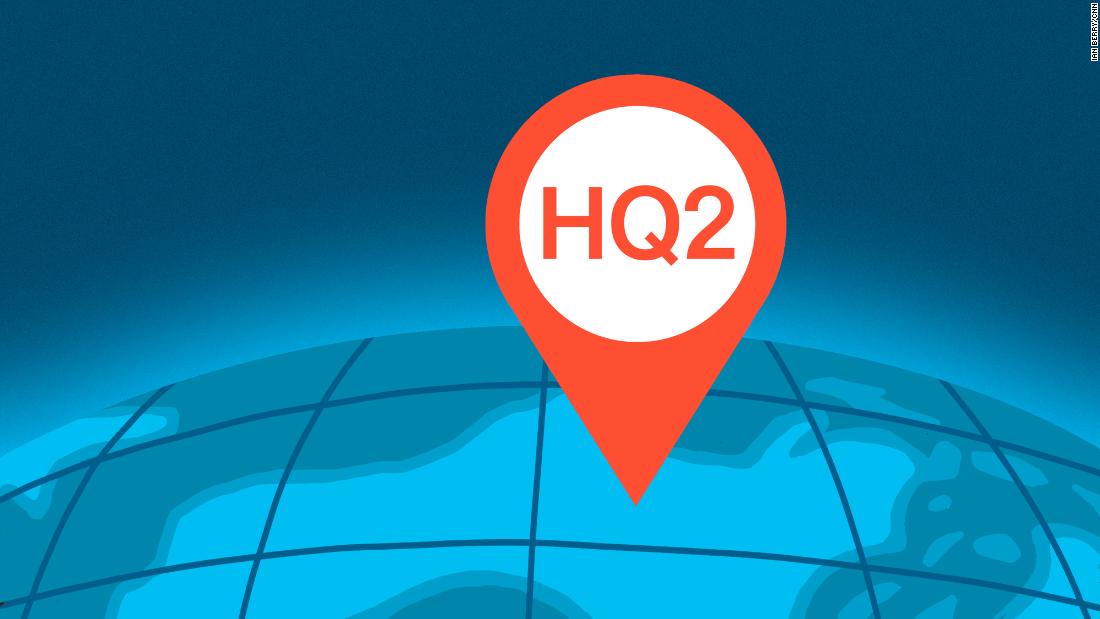
On Monday, the New York Times reported Amazon was close to a deal to split HQ2 between the Long Island City neighborhood of Queens, New York, and the Crystal City area of Arlington, Virginia. Amazon declined to comment.
The unexpected news raises many questions.
When announcing its search for HQ2, Amazon promised as many as 50,000 high-paying jobs and said the project would cost $5 billion. The new facility was also touted as a "full equal" to its Seattle campus.
The 50,000 promised jobs will be divided between two places, according to The Wall Street Journal. But it's unclear if Amazon's $5 billion investment will be split between the locations, if the two locations will be true equals and what that means for the incentive packages offered by cities.
"I am not sure how this will play out in the public after having this beauty contest across 200 plus locations and promising so much investment and jobs," said Nathan Jensen, an economist at the University of Texas at Austin. "This could feel like a bait and switch for some cities."
But the move to split the project could have benefits.
One of the major concerns about the HQ2 process was how a city would handle the arrival of 50,000 new workers.
"Splitting it in half blunts the negative impact of having to absorb that much new capacity," said John Lettieri, president and CEO of the Economic Innovation Group, a policy and advocacy organization. "It's still a pretty large influx of jobs and investments, but it may be less disruptive."
The two-city strategy also means Amazon can cherry pick the best aspects of each region it selects, such as tapping into two different talent pools. The Wall Street Journal reported the rationale behind selecting two cities is to recruit enough technical workers.
Selecting two sites could also help Amazon skirt some of the responsibility for higher housing prices or more traffic occurring in those areas.
"I suspect that Amazon gets more blame for Seattle's issues with congestion because of Amazon's size," said Tim Bartik, senior economist at the W.E. Upjohn Institute for Employment Research. "If there were 20 different employers that summed to the size of Amazon, probably there would be less blame, because there wouldn't be one employer to focus on."
But even with fewer jobs, the winning cities will still have to address issues like rising home prices, cost of living increases and infrastructure challenges. How difficult that will be depends on the city's proposal and how prepared it is.
"The details matter so much here," said Lettieri. "What are we giving up in terms of incentives? What local capacity do we have to make absorbing that new investment and jobs more seamless and smooth for local residents?"
For example, Long Island City has experienced a dramatic rise in home prices over the years that could be exacerbated by Amazon.
"This is a rapidly growing area," Elizabeth Lusskin, President of the Long Island City Partnership, told CNN Business. "These are real issues that exist in cities everywhere, it's nothing new. ... We need to have a healthy mixed income city, and that's something lots of people are grappling with."
She declined to comment about whether Long Island City is one of the cities nearing a deal with Amazon.
Of course, choosing two locations for HQ2 was always a possibility.
Amazon's document requesting bids for the new facility said the company "may select one or more proposals and negotiate with the parties submitting such proposals before making an award decision, or it may select no proposals and enter into no agreement."
A final decision is expected this year.
Bagikan Berita Ini















0 Response to "Amazon HQ2: The pros and cons of choosing two winners"
Post a Comment